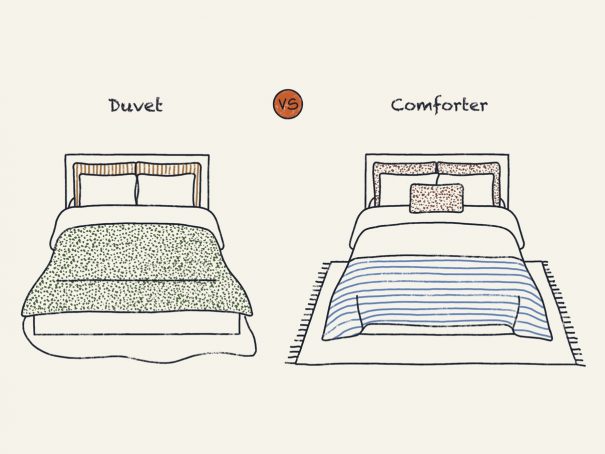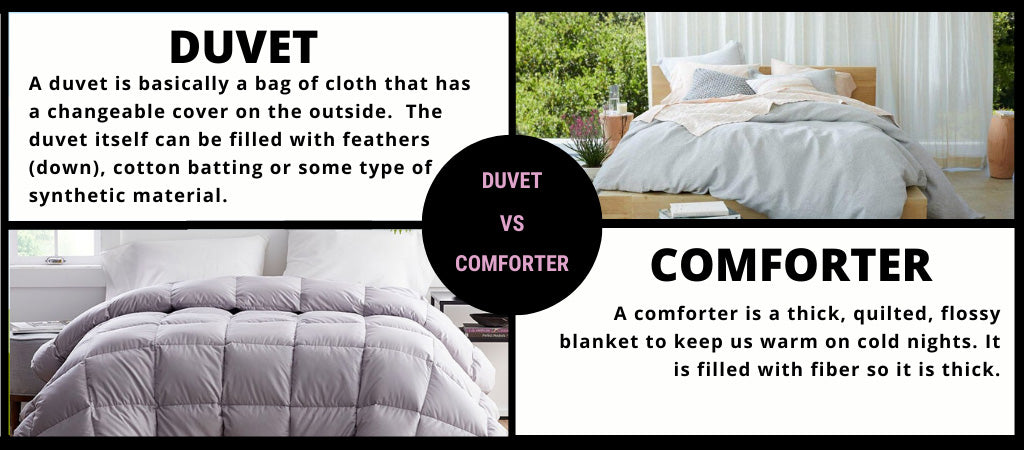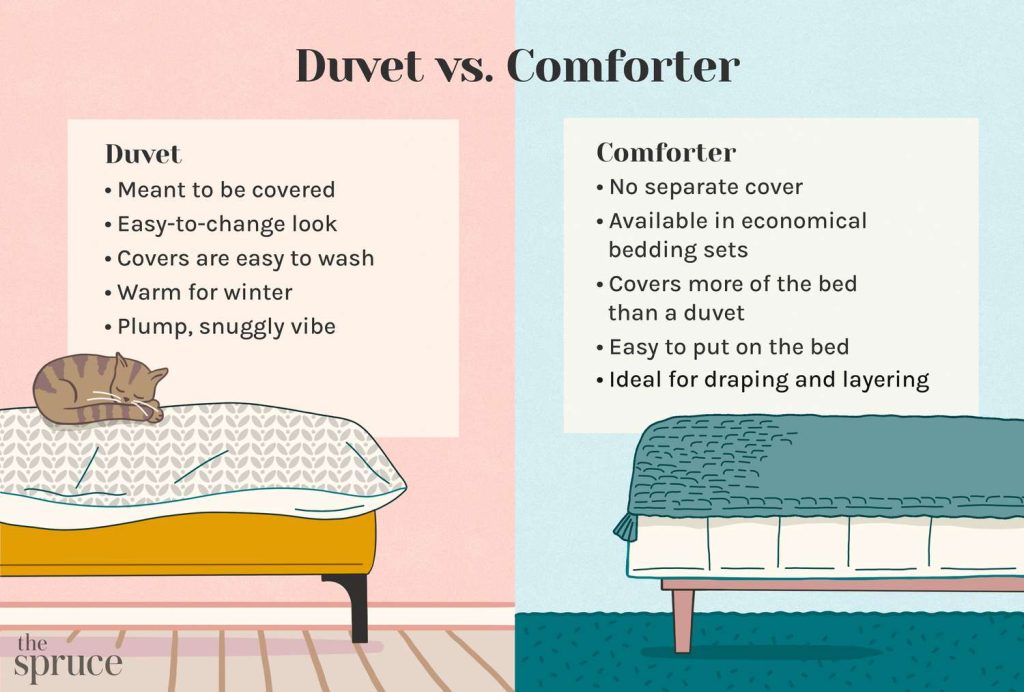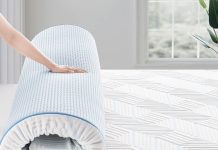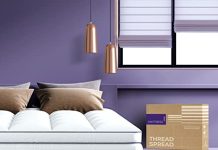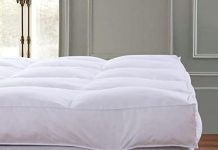Ah, the eternal question – what truly sets a duvet apart from a comforter? We’ve all experienced the bliss of snuggling up under a warm and cozy blanket, but have you ever wondered about the subtle nuances that distinguish these two bedding essentials? Let’s shed some light on this topic, shall we?
Review contents
Construction
Materials
When it comes to the construction of a duvet, the choice of materials is of utmost importance. Duvets are typically filled with either down or synthetic fibers. Down, which is derived from the plumage of ducks or geese, is known for its superior insulation and fluffy comfort. On the other hand, synthetic fibers such as polyester offer a hypoallergenic alternative. The outer shell of a duvet is generally made of cotton or a blend of natural and synthetic fabrics, which provides durability and breathability.
Layers
A quality duvet consists of multiple layers that work together to ensure optimum comfort and warmth. The outer shell of the duvet acts as the first layer and serves as a protective barrier. Inside, the duvet may feature additional layers or chambers that help distribute the filling evenly, preventing it from clumping or shifting. These layers not only enhance the duvet’s durability but also contribute to a more even distribution of warmth throughout the night.
Stitching
The stitching of a duvet plays a crucial role in maintaining its structural integrity and preventing the filling from shifting. Baffle box stitching is a popular technique that creates small, square compartments within the duvet. These compartments keep the filling in place and prevent it from migrating to one side, ensuring consistent warmth. Another common stitching pattern is the quilted or channel stitching, which creates long, parallel lines and maintains the loft of the duvet. The choice of stitching method depends on personal preference and desired aesthetic appeal.
Size and Fit
Standard Sizes
Duvets come in a range of standard sizes to accommodate different bed dimensions. Twin and Twin XL sizes are perfect for single sleepers or small beds, while Full or Double sizes are suitable for larger individual sleepers or couples. Queen and King sizes provide ample coverage for larger beds, ensuring maximum comfort for both sleepers. It is important to choose a duvet size that is compatible with the corresponding mattress size to ensure a proper fit and prevent any uncomfortable overhang.
Fit on Bed
A well-fitting duvet should cover the mattress and drape over the sides of the bed without excessive bunching or hanging. It is recommended to choose a duvet size that matches the dimensions of your mattress for the best fit. Pay attention to the depth of your mattress as well, as some duvets may be designed to accommodate deeper mattresses or mattress toppers.
Cover or Encasement
To protect your duvet and enhance its aesthetic appeal, it is common to use a duvet cover or encasement. Duvet covers are removable and washable, allowing for easy maintenance and the ability to change the look of your bedding without replacing the entire duvet. Encasements, on the other hand, offer complete protection by fully enclosing the duvet and providing an additional layer of defense against spills, stains, and allergens. The choice between a cover and encasement depends on personal preference and specific needs.
This image is property of cdn.shopify.com.
Design and Appearance
Decorative Function
In addition to its functional purpose, a duvet also serves as a decorative element in the bedroom. The design and appearance can greatly enhance the overall aesthetic of the space. The wide range of duvet designs available ensures that you can find one that perfectly complements your personal style and existing décor. From classic solid colors to intricate patterns and prints, the options are endless. Some duvets even feature reversible designs, allowing for versatility and the ability to change the look of your bedding with a simple flip.
Design Options
Duvets offer endless design options to suit various preferences and styles. Whether you prefer a minimalist and sleek look or a bold and vibrant statement, there is a duvet design for everyone. Floral patterns, geometric shapes, and abstract prints are just a few examples of the design options available. Additionally, some duvets may feature embroidered details or embellishments that add a touch of elegance and sophistication to your bedding ensemble.
Weight and Thickness
The weight and thickness of a duvet can vary depending on the fill power and materials used. Higher fill power duvets tend to be lighter and offer more warmth without the need for excessive bulk. However, personal preference and the climate in which you live also play a role in determining the ideal weight and thickness of your duvet. Some individuals may prefer a heavier duvet for a cozy and enveloping feel, while others may prefer a lightweight option that allows for breathability and flexibility.
Usage and Maintenance
Versatility
Duvets are incredibly versatile and can be used in a variety of ways. They are commonly used as the primary bedding layer, replacing the need for a top sheet and blanket. Duvets can also be used as an additional layer of warmth during colder months, placed on top of a comforter or quilt. Additionally, duvets can be used as a decorative throw, draped over the foot of the bed or folded neatly at the end for an added touch of style.
Washing and Cleaning
Proper care and maintenance are crucial for ensuring the longevity and cleanliness of your duvet. Most duvets can be machine washed on a gentle cycle with mild detergent. However, it is important to check the manufacturer’s care instructions to ensure the best results. Duvet covers or encasements should be washed regularly to keep them fresh and free of dust and allergens. Dry cleaning may be necessary for certain duvet types or if the care instructions specify.
Longevity
With proper care, a high-quality duvet can last for many years. Investing in a duvet made from durable materials and with well-constructed stitching will help ensure its longevity. Regular washing and proper storage during off-seasons can also help extend the lifespan of your duvet. Keep in mind that over time, the loft and insulation properties of a duvet may naturally diminish, necessitating a replacement. However, with proper care and maintenance, you can enjoy the comfort and warmth of your duvet for an extended period.
This image is property of casperblog.imgix.net.
Origins and Cultural Influences
Origins of Duvets
The origins of duvets can be traced back to rural European communities, particularly in colder regions. Historically, duvets were made from natural materials such as feathers and straw and used to provide essential warmth during harsh winters. Over time, the concept of duvets spread across continents, evolving to incorporate various materials and construction techniques, ultimately becoming a staple in many households worldwide.
Cultural Differences
Different cultures have their own unique bedding traditions and preferences when it comes to duvets. In Scandinavian countries, for example, duvets are often used as the primary bedding layer throughout the year, reflecting the colder climate. In contrast, Mediterranean regions may opt for lighter duvets or forgo them altogether in favor of lightweight blankets due to the warmer temperatures. These cultural differences highlight the adaptability and versatility of duvets as they cater to various climates and individual needs.
Regional Preferences
Within a single country, there can be regional preferences for certain types of duvets. For example, in the United States, individuals in the northern states may prefer heavier duvets with higher fill power to combat colder winters. In contrast, those in the southern states may lean towards lighter duvets or even forgo them entirely due to milder temperatures. Regional preferences are often influenced by climate, cultural norms, and personal comfort factors, demonstrating the diversity and customization options available in the world of duvets.
Bedding Sets and Accessories
Availability in Sets
Duvets are often available as part of bedding sets, offering convenience and a cohesive look for your bed. These sets typically include matching pillow shams or cases, providing a polished and coordinated aesthetic. Purchasing a duvet as part of a set can also save you time and effort in searching for individual pieces that complement each other.
Pillow Shams and Cases
Pillow shams and cases are essential accessories that complete the overall look of your bedding ensemble. Pillow shams are designed to fit snugly over your pillows and often feature decorative details, such as flanges or intricate embroidery, that add an extra layer of sophistication. Pillow cases, on the other hand, are functional covers that protect your pillows from dirt and oils, ensuring a clean and fresh sleeping surface. Including matching pillow shams and cases in your duvet set can elevate the overall aesthetic of your bed.
Bed Skirts
To enhance the overall appearance and add a touch of elegance to your bed, bed skirts serve as the perfect accessory. Bed skirts, also known as dust ruffles, are fabric panels that attach to the sides of the mattress and drape down to the floor, concealing the space underneath the bed. They are available in various colors, patterns, and lengths, allowing you to customize the look of your bed to suit your personal style. Bed skirts not only enhance the visual appeal but also provide a practical solution for hiding unsightly storage or dust accumulation.
This image is property of www.thespruce.com.
Price Range
Factors Affecting Price
The price of a duvet can vary based on several factors such as the quality of materials used, the brand reputation, and the construction techniques employed. Duvets made from higher quality down or synthetic fibers will generally be more expensive due to their superior insulation and durability. Additionally, duvets with intricate designs, embellishments, or specialized stitching may also command a higher price. The overall craftsmanship and attention to detail are reflected in the price of the duvet.
Comparison of Prices
The price range for duvets can vary significantly depending on the factors mentioned above. Entry-level duvets made from synthetic materials can typically be found at a more affordable price point, ranging from $50 to $100. Mid-range duvets made from a blend of natural and synthetic materials typically fall within the range of $100 to $300. Premium duvets made from high-quality down or luxury fabrics can range from $300 to $1000 or more. It’s important to consider your budget, desired features, and personal preferences when comparing prices.
Value for Money
While price is an important consideration, it is also essential to evaluate the value for money when purchasing a duvet. Investing in a high-quality duvet that meets your requirements and provides comfort and durability can offer a great return on investment. A well-made duvet that lasts for years and provides optimal comfort and warmth can be considered a worthwhile purchase. Consider factors such as the quality of materials, construction techniques, and customer reviews to assess the overall value a duvet offers.
Allergy Considerations
Hypoallergenic Options
For individuals with allergies or sensitivities, hypoallergenic duvet options are available. These duvets are designed to minimize the risk of allergens such as dust mites, mold, and pet dander accumulating in the bedding. Hypoallergenic duvets are typically made from synthetic fibers that resist allergen accumulation or undergo specialized treatments to inhibit the growth of allergens. It is important to carefully read the product descriptions and labels to ensure that the duvet meets your specific allergy needs.
Dust Mite Resistance
Dust mites are a common allergen that can trigger respiratory issues and allergies in some individuals. Dust mite-resistant duvets are specifically designed to deter dust mite infestations and minimize allergic reactions. These duvets are tightly woven, reducing the likelihood of dust mites penetrating the fabric and preventing them from thriving in the bedding. Regular cleaning and maintenance, such as washing the duvet cover or encasement, can further reduce the presence of dust mites.
Down or Synthetic Fill
When choosing a duvet, individuals with allergies may opt for synthetic fill duvets as an alternative to down-filled options. Synthetic fill duvets are typically made from hypoallergenic materials such as polyester or microfiber, which are resistant to allergen accumulation. These duvets provide a comfortable and allergy-friendly option for individuals who prefer a non-feather or non-down bedding option. It is important to carefully read product labels and descriptions to ensure that the duvet is indeed hypoallergenic.
This image is property of www.oursleepguide.com.
Seasonal Use
Temperature Regulation
One of the benefits of using a duvet is its ability to regulate body temperature during sleep. The insulation properties of the duvet fill, whether down or synthetic, help trap body heat and maintain a comfortable sleeping environment. In colder months, a duvet can provide additional warmth and insulation, while during warmer months, a lighter duvet can prevent overheating. The ability to adjust the weight and thickness of the duvet, along with layering options, allows for personalized comfort throughout the seasons.
Winter vs. Summer Use
Duvets are popular bedding choices for both winter and summer use, thanks to their adaptability and layering options. In winter, a thicker and heavier duvet can provide the necessary warmth and insulation to combat frigid temperatures. Layering a duvet with a blanket or adding additional layers of bedding can further enhance warmth and comfort. In summer, opting for a lighter duvet or a duvet with a lower fill power can provide breathability and prevent overheating.
Layering
Duvets offer the flexibility to layer bedding to suit individual preferences and seasonal changes. Additional layers, such as blankets or quilts, can be added on top or underneath the duvet for increased warmth in colder months. Layering not only provides customizable comfort but also allows for easy adjustment as the seasons transition. By layering, you can achieve just the right amount of warmth and comfort throughout the year, ensuring a restful night’s sleep regardless of the temperature outside.
Consumer Preferences
Duvet vs. Comforter Preference
When it comes to choosing between a duvet and a comforter, personal preference plays a significant role. Some individuals prefer the versatility and customizable comfort of a duvet, while others find comforters more convenient due to their all-in-one nature. Comforters are typically filled with synthetic fibers and are often constructed with an attached fabric cover. Duvets, on the other hand, are designed to be used with a separate cover or encasement, allowing for easy maintenance and design flexibility. Both options have their own advantages, and it ultimately comes down to individual preference and lifestyle.
Preferences Based on Climate
Climate is an important factor that influences consumer preferences when it comes to duvets. Individuals residing in colder regions may prioritize warmth and insulation, opting for heavier duvets or higher fill power options. In contrast, those living in warmer climates may lean towards lighter duvets or even utilize alternative bedding options that provide breathability. Personal comfort and the ability to regulate body temperature are key considerations when choosing a duvet that caters to specific climatic conditions.
Personal Comfort Factors
Personal comfort factors, such as preferred sleeping temperature, body heat regulation, and sleeping habits, also influence consumer preferences for duvets. Some individuals naturally run hot and may require a lighter duvet to prevent overheating during sleep. Others may experience colder body temperatures or sleep in a cooler environment, necessitating a thicker and warmer duvet to ensure optimum comfort. The ability to customize duvet weight and layering options allows individuals to address their unique comfort needs and ensure a restful night’s sleep.
This image is property of www.dreamcloudsleep.com.

